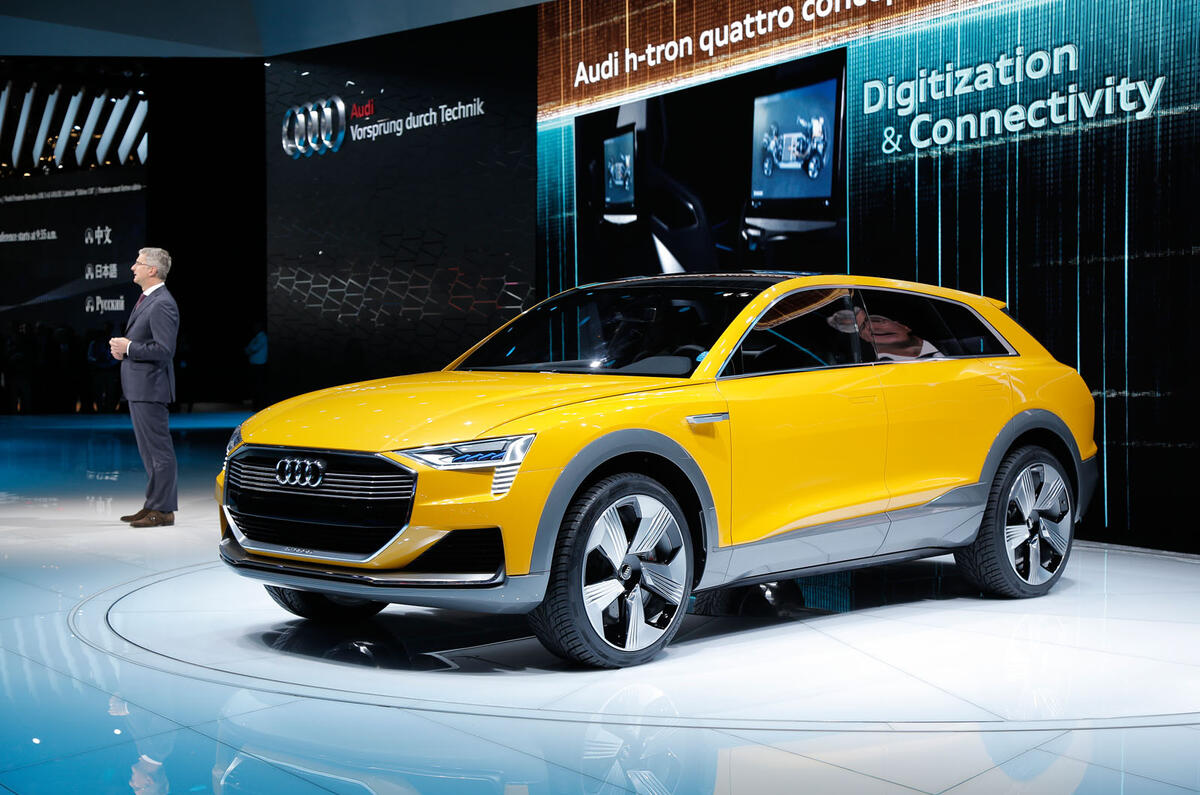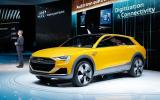The Audi h-tron quattro concept has been billed as a production-relevant hydrogen fuel cell SUV that draws heavily on the contemporary platform structure, electric drivetrain architecture and battery technology of the earlier e-tron quattro concept.
Promising zero-emissiosn compatibility, a refuelling time of just four minutes using the latest in hydrogen fuelling technology and a creditable 373-mile range, the four-wheel-drive concept is also claimed to have a 0-62mph time of less than seven seconds, a restricted 124mph top speed and the ability to run in front-wheel drive mode at typical urban speeds.
The h-tron quattro has been created to showcase a fifth-generation fuel cell stack under development at Audi’s Ingolstadt engineering headquarters in Germany. It is tentatively planned for introduction on a production version of the h-tron quattro in 2020.
The new fuel cell stack is fuelled by hydrogen held in three carbonfibre-reinforced plastic, 700bar tanks, one in the space of the traditional transmission tunnel and smaller ones mounted across the car beneath the rear seat and the boot floor and offering a combined capacity of 6kg. The stack consists of 330 individual cells and develops a nominal 110kW (148bhp) of electricity.
Developed to operate at up to 95deg C (an increase of 15deg on the fourth-generation fuel cell stack used in the Audi A7 h-tron prototype driven by Autocar in Los Angeles in 2014), the latest stack is mounted up front underneath the bonnet in the space traditionally taken up by the combustion engine on existing Audi models and has been conceived to operate in temperatures as low as -28deg C.
Described as being lighter, smaller, stronger and more economical than the unit it replaces, the new fuel cell stack is claimed to boast an efficiency rating of up to 60% – more than double that of a typical combustion engine.
One key development being touted by Audi is the reduction in the amount of platinum used in its production, making it cheaper and more environmentally friendly. A newly conceived heat pump is also claimed to absorb waste heat more efficiently, reducing the typical heat build-up within the interior associated with early fuel cell prototypes.
In combination with a relatively small 1.8kWh lithium ion battery mounted within the floor in the middle of the passenger compartment that provides an additional boost of 100kW (134bhp) for short periods, the fuel cell stack is claimed to provide the h-tron quattro with a range of up to 373 miles. All up, the battery is claimed to weigh just 60kg.
While the fuel cell operates at between 220 and 280 volts, the battery can run between 220 and 480 volts. A DC converter mounted within the engine compartment is used to equalise the difference, providing electrical energy to a pair of electric motors – one mounted within the front axle assembly with 90kW (121bhp) and another on the rear axle producing up to 140kW (188bhp). Each electric motor has its own single-speed planetary gearset, which acts as a differential.
































Join the debate
Add your comment
Four minute warning
Vorsprung durch Technik (Advancement through technology) ...
Vorsprung durch Technik
Tron.